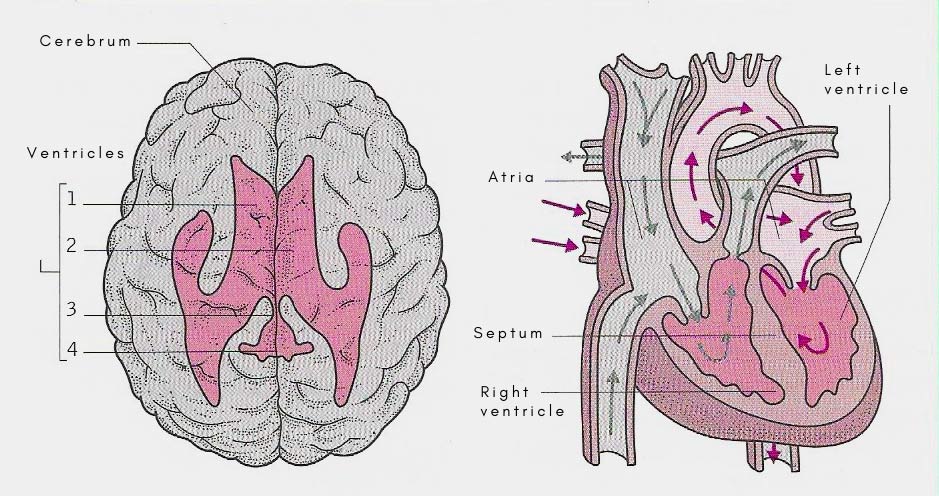ventricle

(Left) Ventricles in the brain. Together, these four irregularly-shaped cavities contain about 25 milliliters of cerebrospinal fluid. (Right) Ventricles in the heart. The ventricles of the heart are the large lower chambers, which are separated by a muscular wall, the septum.
1. A ventricle is either of the two lower chambers of the heart. The ventricles of the heart are the pumping chambers, which receive blood from the atria (upper heart chambers) and pump it to the lungs and to the rest of the body.
2. Alternatively, a ventricle is any of the four fluid-filled cavities within the brain. There is one ventricle in each of the two cerebral hemispheres, which make up the cerebrum; a third at the center of the brain, above the brainstem; and a fourth situated between the brainstem and the cerebellum. These cavities are filled with cerebrospinal fluid and are linked by ducts so that the fluid can circulate through them. The cavities are lined in part with tuft-like clusters of blood vessels called the choroid plexus, derived from vessels in the meninges, which secrete the cerebrospinal fluid.


